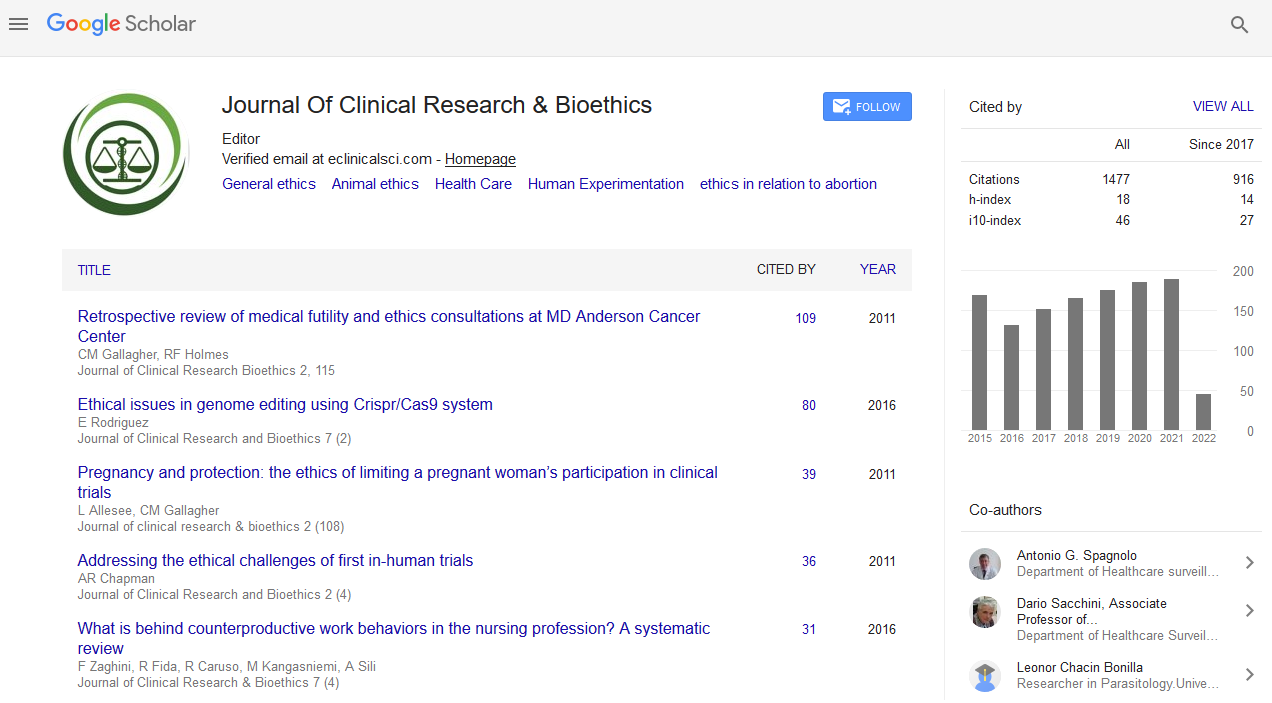PMC/PubMed Indexed Articles
Indexed In
- Open J Gate
- Genamics JournalSeek
- JournalTOCs
- RefSeek
- Hamdard University
- EBSCO A-Z
- OCLC- WorldCat
- Publons
- Geneva Foundation for Medical Education and Research
- Google Scholar
Useful Links
Share This Page
Journal Flyer

Open Access Journals
- Agri and Aquaculture
- Biochemistry
- Bioinformatics & Systems Biology
- Business & Management
- Chemistry
- Clinical Sciences
- Engineering
- Food & Nutrition
- General Science
- Genetics & Molecular Biology
- Immunology & Microbiology
- Medical Sciences
- Neuroscience & Psychology
- Nursing & Health Care
- Pharmaceutical Sciences
Real-time EHR-based patient data analytics for the acceleration of clinical trial recruitment
3rd International Conference on Advanced Clinical Research and Clinical Trials
September 20-21, 2017 Dublin, Ireland
Luis Magalhaes
Clinerion, Switzerland
Posters & Accepted Abstracts: J Clin Res Bioeth
Abstract:
Background: Patient recruitment for clinical trials is a well-known problem that has been extensively documented. Challenges in patient recruitment are the most prominent reason for clinical trial delays. Such delays have a knock-on effect on the entire drug development process, costing pharma companies lost sales revenues. Beyond financial considerations, delays also result in avoidable suffering of patients. These challenges can be overcome by introducing a technology-assisted process for finding patients who could benefit from inclusion in a clinical trial. Innovation: We propose a system which performs real-time, big data analytics on electronic medical records from connected hospitals to identify patients for clinical trial recruitment. The system can perform data-assisted protocol optimization to speed up the protocol development process, site feasibility evaluation to improve site strategy (fewer sites with more patients), and patient search to find eligible patients for recruitment with 24/7 notification of new candidates. Cases: We present three example cases which demonstrate the results of use of the system: 1. During recruitment for an ongoing dyslipidemia trial, where recruitment was behind schedule 2. For recruitment for an atherosclerosis trial where recruitment could be completed ahead of schedule 3. In a series of trials wherein the identified number of patients consistently exceeded the Investigators�?? expectations Conclusions: This electronic patient recruitment system addresses the critical barrier of slow patient recruitment. It enables search and identification of suitable clinical trial candidates using the electronic records of multiple hospitals �?? in real time. The system has been shown to find 10-30x more patients than traditional methods.


